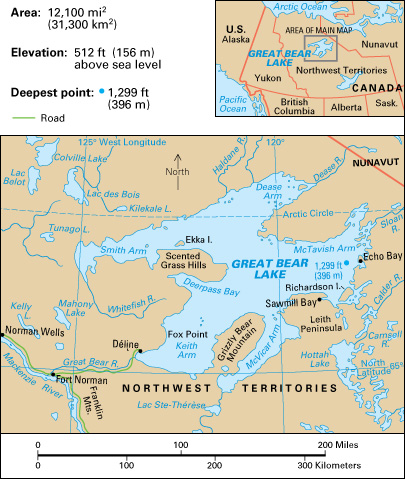Great Bear Lake is the largest lake in Canada and the fourth largest in the Americas. Only Lakes Superior, Huron, and Michigan are larger. Great Bear Lake covers 12,100 square miles (31,300 square kilometers) in the Northwest Territories. The lake spreads across parts of two of Canada’s major land regions, the Canadian Shield and the northern Interior Plains. Part of the lake also lies within the Arctic Circle. Ice covers the lake for about three-fourths of the year. The lake’s Dease Arm and McTavish Arm extend north into the tundra, which is a dry, cold, treeless region. Forests of small trees line the shores of the rest of Great Bear Lake. The Great Bear River drains the lake into the Mackenzie River and becomes part of Canada’s longest navigable river system.

Great Bear Lake contains many fish, including trout, whitefish, and northern pike. The region around the lake has abundant wildlife. Residents from Délįne, on the southwest side of the lake, trap many animals for the fur market. The lake probably got its name because of its size and because of the bears that lived on its shores.
From the 1930’s to 1960, large quantities of pitchblende were mined near Echo Bay on the east side of the lake. Uranium taken from pitchblende that was mined in this area helped make atomic bombs used in 1945 during World War II (1939-1945).
